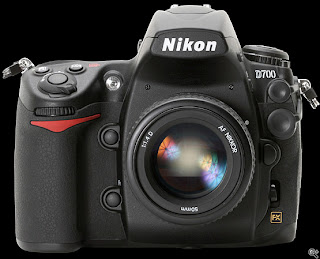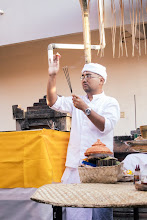 The KODAK KAF-50100 is a four output, high performance CCD (charge coupled device) image sensor with 8176(H) x 6132(V) photoactive pixels designed for a wide range of color image sensing applications. Each pixel contains anti-blooming protection by means of a lateral overflow drain (LOD) thereby preventing image corruption during high light level conditions. A Pulse Flush Gate (PFG) is available to remove charge from every pixel. A Fast Dump Gate (FDG) is available to selectively remove a line of charge during readout. Each of the 6.0um square pixels are selectively covered with red, green or blue pigmented filters for color separation. The sensor is housed in a 52 pin, PGA package with 100 mil pin spacing.
The KODAK KAF-50100 is a four output, high performance CCD (charge coupled device) image sensor with 8176(H) x 6132(V) photoactive pixels designed for a wide range of color image sensing applications. Each pixel contains anti-blooming protection by means of a lateral overflow drain (LOD) thereby preventing image corruption during high light level conditions. A Pulse Flush Gate (PFG) is available to remove charge from every pixel. A Fast Dump Gate (FDG) is available to selectively remove a line of charge during readout. Each of the 6.0um square pixels are selectively covered with red, green or blue pigmented filters for color separation. The sensor is housed in a 52 pin, PGA package with 100 mil pin spacing.
Sunday, July 13, 2008
KAF-50100 The 51 MP CCD Sensor from Kodak
 The KODAK KAF-50100 is a four output, high performance CCD (charge coupled device) image sensor with 8176(H) x 6132(V) photoactive pixels designed for a wide range of color image sensing applications. Each pixel contains anti-blooming protection by means of a lateral overflow drain (LOD) thereby preventing image corruption during high light level conditions. A Pulse Flush Gate (PFG) is available to remove charge from every pixel. A Fast Dump Gate (FDG) is available to selectively remove a line of charge during readout. Each of the 6.0um square pixels are selectively covered with red, green or blue pigmented filters for color separation. The sensor is housed in a 52 pin, PGA package with 100 mil pin spacing.
The KODAK KAF-50100 is a four output, high performance CCD (charge coupled device) image sensor with 8176(H) x 6132(V) photoactive pixels designed for a wide range of color image sensing applications. Each pixel contains anti-blooming protection by means of a lateral overflow drain (LOD) thereby preventing image corruption during high light level conditions. A Pulse Flush Gate (PFG) is available to remove charge from every pixel. A Fast Dump Gate (FDG) is available to selectively remove a line of charge during readout. Each of the 6.0um square pixels are selectively covered with red, green or blue pigmented filters for color separation. The sensor is housed in a 52 pin, PGA package with 100 mil pin spacing.
Tuesday, July 1, 2008
preview Nikon D700
 The introduction of Nikon's new D700 may been one of the worst kept secrets in an industry with more leaks than the Titanic, but it was still something of a surprise coming so hot on the heels of the D3 and D300. Essentially a D3 shrunk down and squeezed into a body roughly the same size as a D300, the D700 is Nikon's first 'compact' professional SLR, and seems designed to go head-to-head with whatever Canon has up its inscrutable sleeve to replace the EOS 5D.
The introduction of Nikon's new D700 may been one of the worst kept secrets in an industry with more leaks than the Titanic, but it was still something of a surprise coming so hot on the heels of the D3 and D300. Essentially a D3 shrunk down and squeezed into a body roughly the same size as a D300, the D700 is Nikon's first 'compact' professional SLR, and seems designed to go head-to-head with whatever Canon has up its inscrutable sleeve to replace the EOS 5D. The imaging side of the D700 is pretty much the same as the D3; it shares the acclaimed 12.1MP full frame ('FX') sensor and has the same processing engine, so we would presume output to be almost identical. The main differences (aside from being considerably smaller) are physical; there's a different shutter (good for 150,000 exposures rather than 300,000 on the D3), different viewfinder prism (with 95% coverage) and a slower burst rate. You also lose the rear LCD info panel (there's no room for it) and one of the D3's two CF card slots, but you do get a couple of extra features to soften the blow slightly; most notably a self-cleaning sensor and a built-in flash. We'll look a little more in-depth at the differences between the D3 and D700 in a moment.
The D700 joins the D3 as a fully-fledged 'professional' model; it has the same tank-like build quality (though we're sure the pop-up flash will cause a few raised eyebrows), and gets you the full pro service from Nikon. And the pricing (around $2999) reflects this; anyone hoping for an 'affordable' semi-pro full frame Nikon SLR will have to wait until the cost of producing such large sensors falls considerably.
Nikon D700 Key Features
- 12.1 megapixel full-frame sensor (8.45µm pixel pitch)
- Image Sensor Cleaning (vibration) *
- ISO 200 - 6400 (with boost up to ISO 25600 and down to ISO 100)
- Also supports DX lenses, viewfinder automatically masks (5.1 megapixels with DX lens)
- 14-bit A/D conversion, 12 channel readout
- Same ultra-fast startup and shutter lag as D3
- Nikon EXPEED image processor (Capture NX processing and NR algorithms, lower power)
- New Kevlar / carbon fibre composite shutter with 150,000 exposure durability *
- Multi-CAM3500FX Auto Focus sensor (51-point, 15 cross-type, more vertical coverage)
- Auto-focus tracking by color (using information from 1005-pixel AE sensor)
- 95% coverage, 0.72x magnification viewfinder *
- Auto-focus calibration (fine-tuning), fixed body or up to 20 separate lens settings
- Scene Recognition System (uses AE sensor, AF sensor)
- Picture Control image parameter presets
- 5 frames per second continuous with auto-focus tracking*
- Optional MB-D10 Battery Pack (same as D300), increases burst rate to 8 fps *
- UDMA compatible single CF card slot *
- 3.0" 922,000 pixel LCD monitor
- Live View with either phase detect (mirror up/down) or contrast detect Auto Focus
- Virtual horizon indicates if camera is level (like an aircraft cockpit display)
- HDMI HD video output
- 'Active D-Lighting' (adjusts metering as well as applying D-Lighting curve)
- Detailed 'Control Panel' type display on LCD monitor, changes color in darkness
- Magnesium alloy body with connections and buttons sealed against moisture
- Improved Info display on main screen *
* Different to D3
preview from dpreview
Saturday, June 21, 2008
Canon EOS 1000D (Rebel XS / Kiss F) Preview
 When Canon launched the EOS 300D back in 2003 it was widely regarded as the first affordable digital SLR and secured Canon a seemingly indomitable number-one spot in the market. Since then the 'small' Canon has gone through three further iterations and the current model - the EOS 450D - offers a feature set and image quality that could only have been dreamed about five years ago (and at a price point well below the 300D's). However, the competition haven't been idle spectators and have recently launched a number of de-spec'ed cameras that have redefined the entry level segment and undercut the EOS 450D in the DSLR hierarchy.
When Canon launched the EOS 300D back in 2003 it was widely regarded as the first affordable digital SLR and secured Canon a seemingly indomitable number-one spot in the market. Since then the 'small' Canon has gone through three further iterations and the current model - the EOS 450D - offers a feature set and image quality that could only have been dreamed about five years ago (and at a price point well below the 300D's). However, the competition haven't been idle spectators and have recently launched a number of de-spec'ed cameras that have redefined the entry level segment and undercut the EOS 450D in the DSLR hierarchy. Canon has now responded to this mounting pressure by launching a new model one tier below the 450D in its current lineup - the EOS 1000D. It shares bits and pieces with Rebels gone by and, depending from which angle you look at it, the new model is either a stripped down 450D or a 'reheated' 400D. It's a lower specification camera than the 450D, by every measure you might see listed on the shop shelf, but is not the huge step down that its market positioning might lead you to expect.
On the next page of this preview you'll find a detailed comparison between the 1000D, 450D and 400D but the headlines are; a 10MP sensor, 2.5 in LCD monitor, 7-point AF system and no spot-metering (like the 400D) but Live View with both phase- and contrast-detect AF, SD/SDHC for storage and a control and menu layout that is pretty much identical to the EOS 450D's. In fact, because it's based around the same Digic III processor, it shares an interface with almost every current Canon DSLR all the way up to the 1DsMkIII.
Note that throughout this preview we will refer to the EOS 1000D by its European name; if you live in other parts of the world you'll know the camera by Rebel XS or Kiss F Digital, but they're all essentially the same camera.
read more at dpreview
 RSS Feed (xml)
RSS Feed (xml)

